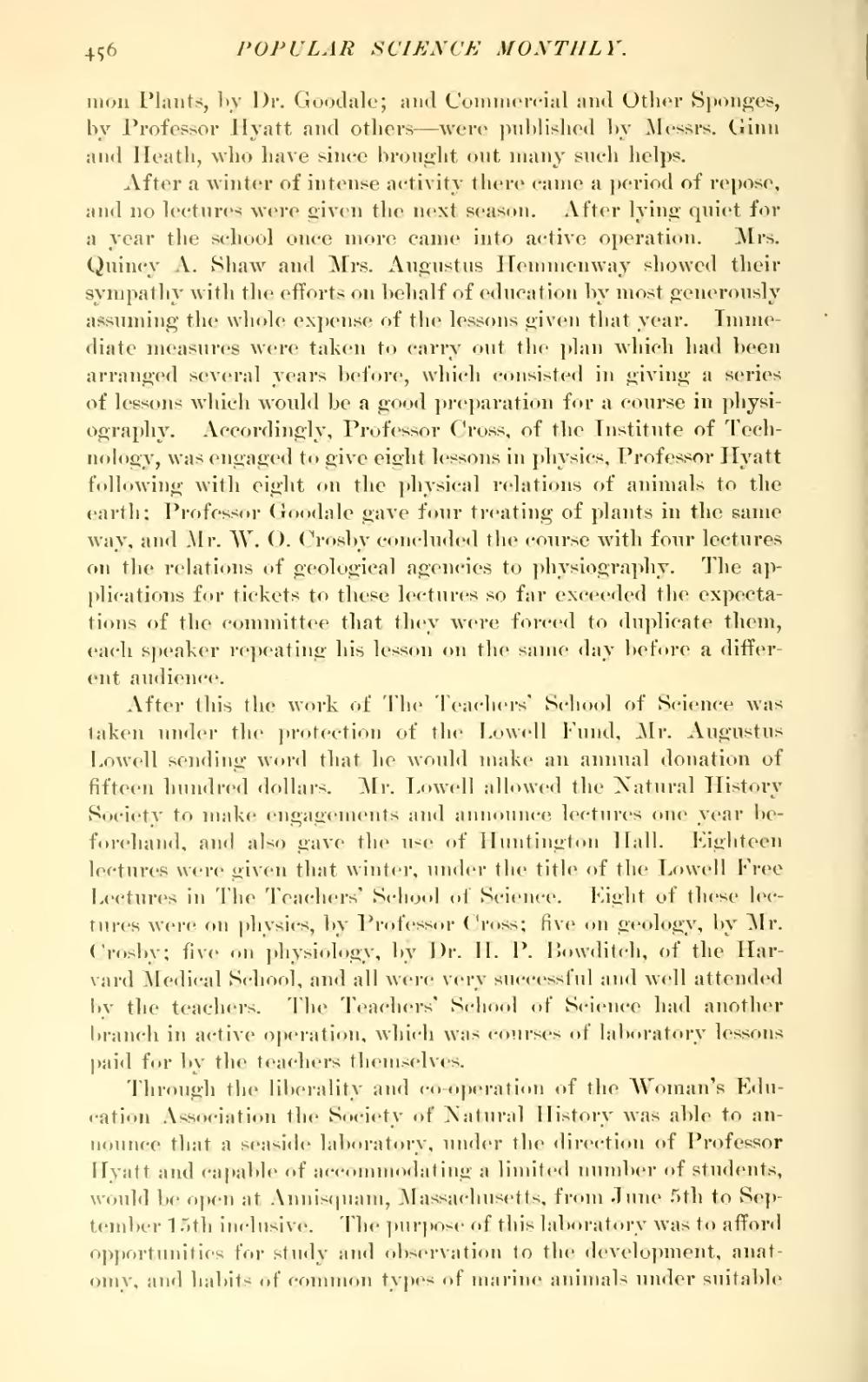mon Plants, by Dr. Goodale; and Commercial and Other Sponges, by Professor Hyatt and others—were published by Messrs. Ginn and Heath, who have since brought out many such helps.
After a winter of intense activity there came a period of repose, and no lectures were given the next season. After lying quiet for a year the school once more came into active operation. Mrs. Quincy A. Shaw and Mrs. Augustus Hemmenway showed their sympathy with the efforts on behalf of education by most generously assuming the whole expense of the lessons given that year. Immediate measures were taken to carry out the plan which had been arranged several years before, which consisted in giving a series of lessons which would be a good preparation for a course in physiography. Accordingly, Professor Cross, of the Institute of Technology, was engaged to give eight lessons in physics. Professor Hyatt following with eight on the physical relations of animals to the earth; Professor Goodale gave four treating of plants in the same way, and Mr. W. O. Crosby concluded the course with four lectures on the relations of geological agencies to physiography. The applications for tickets to these lectures so far exceeded the expectations of the committee that they were forced to duplicate them, each speaker repeating his lesson on the same day before a different audience.
After this the work of The Teachers' School of Science was taken under the protection of the Lowell Fund, Mr. Augustus Lowell sending word that he would make an annual donation of fifteen hundred dollars. Mr. Lowell allowed the Natural History Society to make engagements and announce lectures one year beforehand, and also gave the use of Huntington Hall. Eighteen lectures were given that winter, under the title of the Lowell Free Lectures in The Teachers' School of Science. Eight of these lectures were on physics, by Professor Cross; five on geology, by Mr. Crosby; five on physiology, by Dr. H. P. Bowditch, of the Harvard Medical School, and all were very successful and well attended by the teachers. The Teachers' School of Science had another branch in active operation, which was courses of laboratory lessons paid for by the teachers themselves.
Through the liberality and co-operation of the Woman's Education Association the Society of Natural History was able to announce that a seaside laboratory, under the direction of Professor Hyatt and capable of accommodating a limited number of students, would be open at Annisquam, Massachusetts, from June 5th to September 15th inclusive. The purpose of this laboratory was to afford opportunities for study and observation to the development, anatomy, and habits of common types of marine animals under suitable

